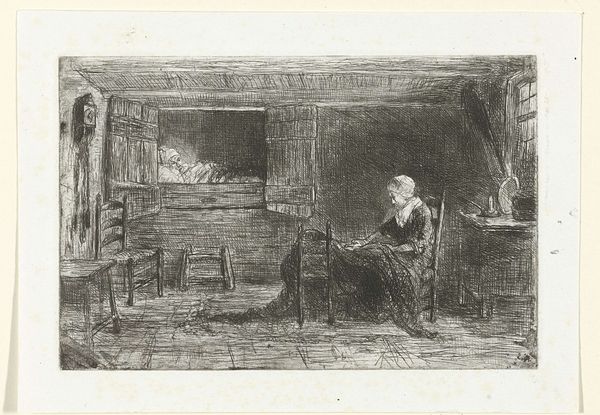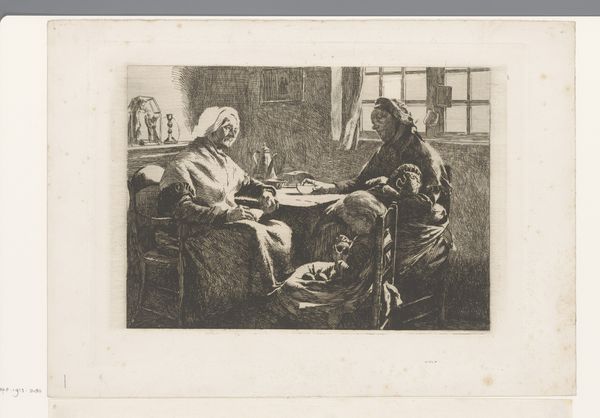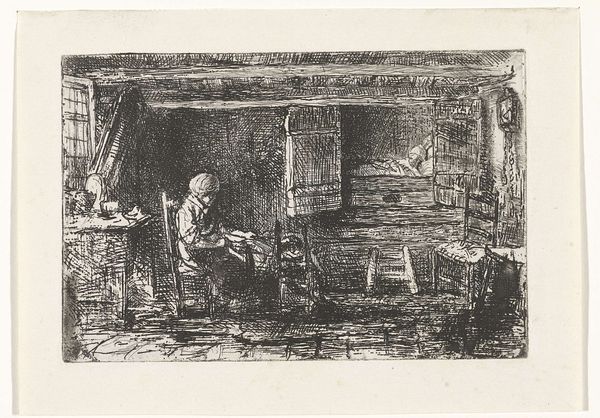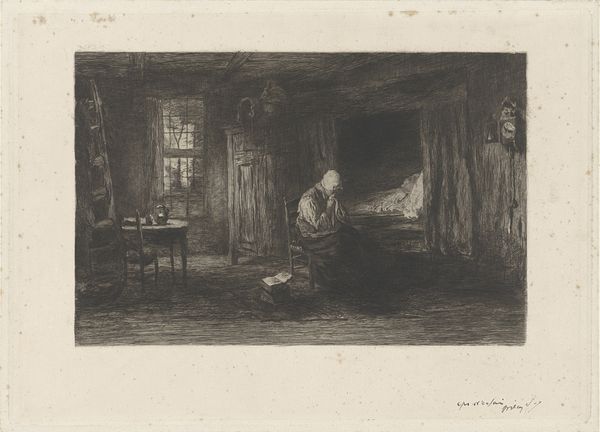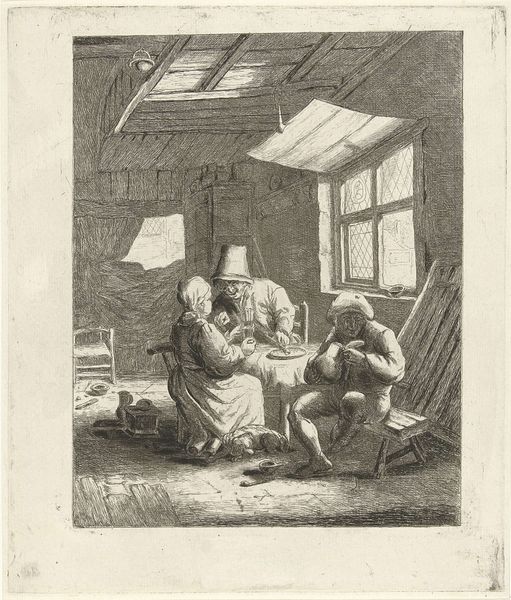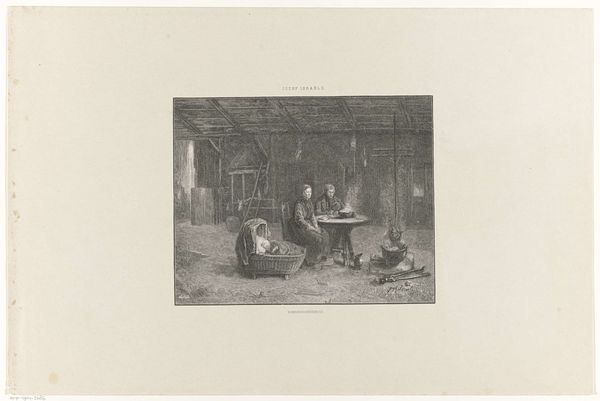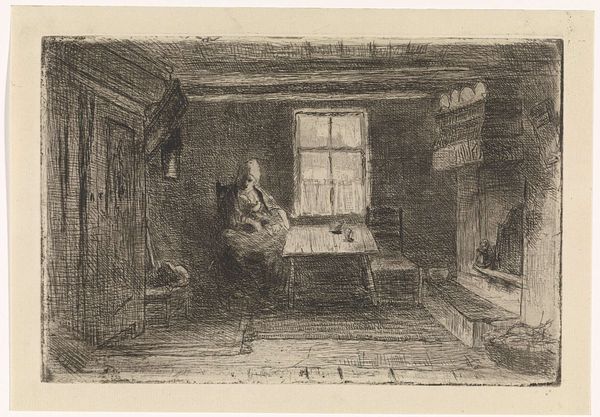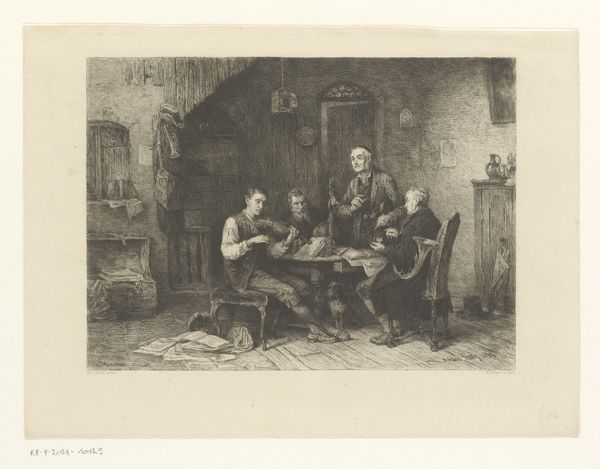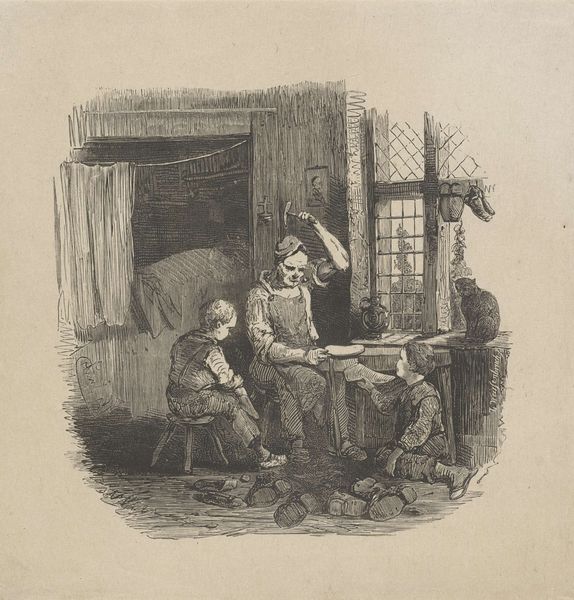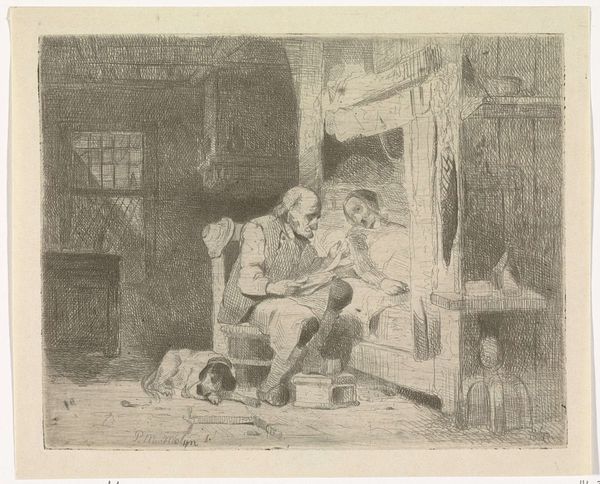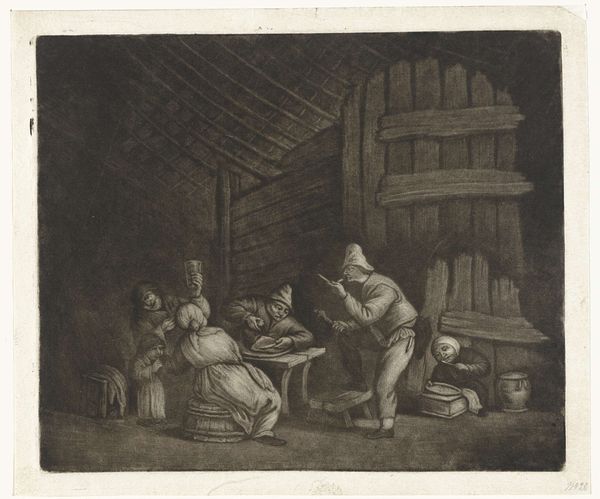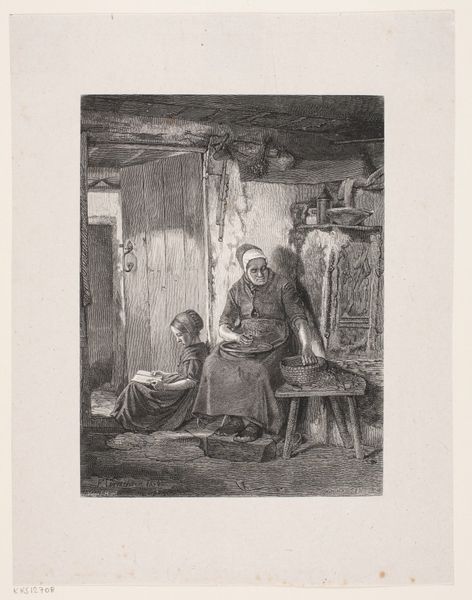
drawing, charcoal
#
drawing
#
charcoal drawing
#
pencil drawing
#
genre-painting
#
charcoal
#
history-painting
#
realism
Dimensions: height 188 mm, width 250 mm
Copyright: Rijks Museum: Open Domain
Curator: Just look at this scene! Ferdinand Leenhoff’s "Interieur met gezin aan de maaltijd"—"Interior with Family at Mealtime," created sometime between 1851 and 1893. It’s rendered with charcoal and pencil. Honestly, it's quite affecting, don’t you think? Editor: Haunting, more like. It feels less like a celebration of family and more like a depiction of stark necessity. The light seems hesitant, and everyone looks… exhausted. Is that a chicken casually strolling through the foreground? Curator: Yes, indeed. A symbol of domestic life, wouldn't you say? This drawing captures a realism indicative of its period. Think of the rise of industrialization, the romanticizing – or maybe not-so-romanticizing – of rural life. The setting itself, I'd hazard to guess, plays a very crucial part in understanding how it must have been back then. Editor: Absolutely, and the almost photographic detail contributes to this. Leenhoff's choice of charcoal and pencil seems perfect, giving a certain weightiness and texture, almost like you could reach out and touch the rough fabric of their clothes. I see a socio-political statement; maybe about the romanticised peasantry which at times feels a lot different in comparison to the one often represented within salon culture. Curator: Interesting that you frame it like that. Maybe I’m being too idealistic here, but despite what looks like exhaustion in the subjects, there is indeed love represented within the composition. Observe their closeness to each other for a clearer view. The mother passing food to her husband and vice-versa; while being watched from the background by her two older children sitting at a children's table! A little tender vignette amidst hard times. Editor: I'll give you the intimacy, certainly. It's undeniable that it conveys affection amongst the individuals portrayed in this drawing. But I think it also highlights a certain type of tension, of lives bound by necessity and duty. This isn't just a heartwarming scene; it's a complex portrait of its era and what it means to belong in a particular segment of society. A representation of working class folks who get rarely featured throughout official portraiture from this specific historical juncture! Curator: Well, perhaps art exists to not just beautify but also to hold a mirror. And sometimes, that reflection isn’t always the prettiest thing, even when it portrays individuals involved in day to day lives, as they work towards the continuation of our species through successive generations. I appreciate seeing it through your eyes as much as I am confident in what I think it reflects. Editor: And it’s in that friction, I suppose, that art finds its truest resonance – its ability to spark different viewpoints regarding history and what should ultimately be the take away. I'm off for my afternoon coffee now; feel free to join me for further debate if you ever find the time to do so.
Comments
No comments
Be the first to comment and join the conversation on the ultimate creative platform.
